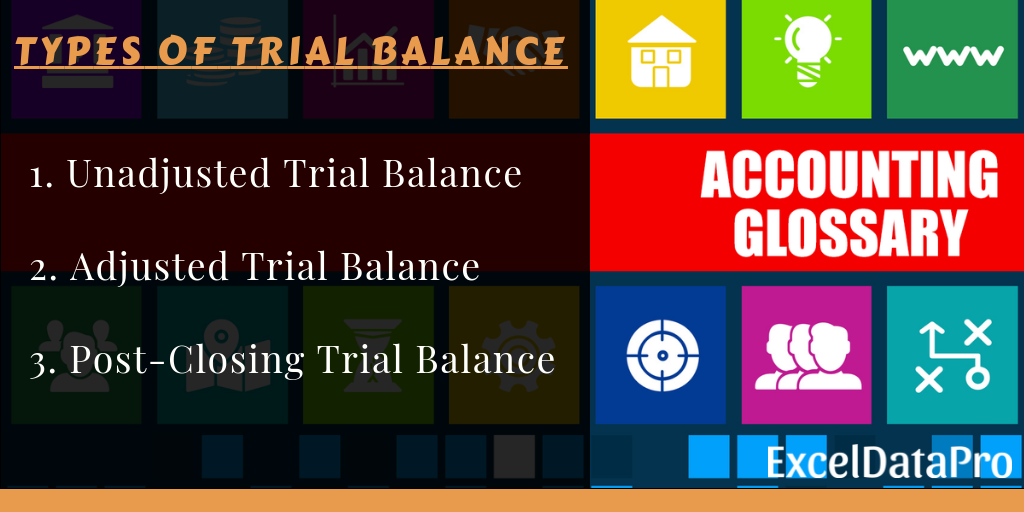
Trial Balance – Definition
Trial Balance is a document in which we record the closing balances of all the ledger accounts at the end of the accounting period. It is a statement with all closing balances of ledger accounts on a certain date.
Usually, it is prepared at the end of an accounting period that assists us in the easy drafting of other financial statements.
Preparing this document is the first and foremost step in the preparation of financial statements. ( balance sheet, Income Statement, Cash flow Statement, etc)
Types of Trial Balance
There are 3 types of Trial Balance:

1. Unadjusted
Unadjusted Trial Balance is the first and foremost document to be prepared for final accounts. You need to prepare it before passing any adjustment entries. In other words, it is prepared to find the unadjusted ledger balances if there are any in our ledgers.
2. Adjusted
Adjusted Trial Balance is prepared to see whether the adjustment entries passed are correct or not after making all adjustments.
3. Post-Closing
Usually, Post-Closing Trial Balance will be same as above. Sometimes due to adjustments or unrecorded entries, the balances of ledgers might change. It is helpful for adding the opening balances for the next accounting year.
Purpose of Making a Trial Balance
- It is the first step towards the yearly closing.
- Helps to identify, rectify and balance debit and credit entries of ledger accounts according to the double-entry system.
- It ensures the accuracy of extraction from the account balances from the ledgers.
How to Prepare Trial Balance?
Follow the below-given steps:
- To prepare this document, all the ledger balances are separated into debit and credit balances.
- On the debit side, you record the Assets and expenses accounts. Whereas, on the credit side you record the liabilities, capital and income accounts.
- The main purpose of preparing this document is to ensure that all the entries are made according to the ruling of the double-entry system.
- Totals of both debit and credit side should match. If the totals don’t match, we need to investigate the differences. It is mandatory to resolve before the preparation of financial statements.
- It is mandatory to resolve before the preparation of financial statements.
Limitations and Undetectable Errors
This statement can easily identify any mistake in terms of mathematical or typographical errors entered in the ledger. There are some errors where it doesn’t help. They are:
- A transaction not entered in the books of account or ledger will not have entries on both sides. Thus, the balance of debit and credit side will match.
- In case, you entered the wrong amount on both sides; debit and credit. Still, it will balance it.
- When you do an opposite entry; report the debit amount in credit and the credit amount in debit. This will also balance the statement and will not rectify this error.
- Doesn’t rectify the reporting of the amount under the wrong head.
Trial Balance in Excel
We have created a ready-to-use template with predefined formulas. This template helps you easily prepare and find the difference.
Click on the link below to download the template:
If you have any queries or questions, share them in comments below and I will be more than happy to help you.
Leave a Reply